Designers Isay Weinfeld and Montroy DeMarco Architecture, and Construction Manager Shawmut Complete Le Pavillon Restaurant at One Vanderbilt Tower in Manhattan
The Project Wins Engineering News-Record New York Best of the Year Award in the Residential/Hospitality Category
The project team included property owner and restaurant partner SL Green, landscape designer Future Green and lighting designer Dot Dash
New York, NY – The architectural team of two internationally celebrated design powerhouses: Brazil-based architect Isay Weinfeld and New York City executive architect Montroy DeMarco Architecture (MDA), along with construction manager Shawmut Design & Construction, have completed the much heralded Le Pavillon restaurant at One Vanderbilt in Manhattan.
Developed and operating under the guidance of Michelin-starred Chef Daniel Boulud, the restaurant has won Engineering News-Record New York (ENR NY) magazine’s Best of the Year Award in the Residential/Hospitality category. The project was also a runner-up in the overall ENR NY Best of the Year competition due to its creative design and numerous technical innovations.
Le Pavillon is both a culinary and visual feast for guests. Located inside midtown Manhattan’s tallest tower, the 11,000-square foot dining space is a garden oasis that has clear views of the iconic Grand Central Station and the Chrysler Building. SL Green Realty, New York City’s largest commercial landlord, developed and owns the 93-story, 1,401-foot tall One Vanderbilt building.
SL Green partnered with the Dinex Group, founded by Chef Daniel Boulud, on the creation of Le Pavillon. Chef Boulud was inspired by traditional French pavilions, used for celebrations and gatherings that are typically located in parks or on avenues lined with gardens and trees. “Our goal was to evoke a bygone era of French classic restaurants by allowing guests in the new millennium to savor fine cuisine prepared with fresh, healthy, and locally sourced ingredients within a garden retreat,” said Boulud.
“The design challenge was to create an intimate dining experience surrounded by nature within a towering 55-foot-high space, surrounded by a glass curtain wall, inside the newly completed 93-story One Vanderbilt, located on the corner of Vanderbilt Avenue and 42nd Street,” shared MDA’s Principal Steven Andersen.
Isay Weinfeld, known for incorporating green landscapes into his interior projects, was a natural choice to lead the design effort. “I believe we succeeded in making Le Pavillon warm and cozy within the impressive scale of the venue. The solution came with bringing in lush greenery, which makes for a soothing and peaceful ambience, to create an oasis amidst the hustle-bustle of the city,” said Weinfeld.
The collaboration between the designers was made easier due to their previous work on other New York City projects. According to Andersen, “We had developed a strong relationship with Isay Weinfeld during our recent collaborations on Manhattan’s Four Seasons restaurant and a high-end residential project. He understood the desire to capture the spirit of a New York skyscraper living in harmony with nature perfectly.”
Other project team members included M/E/P engineer JB&B; lighting designer Dot Dash; landscape architect Future Green Studio; structural engineer Severud; acoustic consultant Cerami; AV consultant TAD; and food service consultant Next Step Design.
Design, Layout, and Materials
Le Pavillon is located on the second floor of One Vanderbilt, visible to pedestrians from the street below. A street level entry vestibule has a dedicated stair and elevator that lead to the dining room and kitchen above. The dining room layout accommodates up to 120 seated guests. A semi-private Garden Table is reserved for special food and wine experiences, and a 46-seat bar and lounge overlook the new Vanderbilt Plaza. According to Christopher White, MDA Project Architect, “the geometry of the space did not initially provide the cozy atmosphere desired by the clients. MDA worked with Weinfeld to develop the design of a sloped, soffited ceiling, supported from existing building beams at the curtain wall by cantilevered steel needle beams up to 26-feet long, to cover half of the dining area. This visual reduction in height provided intimacy to the space. The height of the low ceiling varies from 7′-6″ to 14″.”
Mechanical systems, including ventilation, lighting, fire sprinklers, sound, and security cameras are concealed within the ceiling, and were carefully coordinated to keep the ceiling as thin as possible. The ceiling membrane is constructed of perforated acoustic drywall with an acoustic fabric overlay to control noise and echo in the large space. It is wrapped in a stretch acoustic fabric by Gilford of Maine. The finish fabric hides the sound system speakers from view but permits sound transmission from speakers above it.
The remaining area of the dining room beyond the low ceiling has a full ceiling height of 55 feet. This area is filled with greenery, and the palette was selected to act as a backdrop for the interior landscape. The use of custom materials is apparent from the initial street level entry. Italian Breccia di Versailles Levigato marble wrap the structural steel stair and landings, while Venetian plaster line walls throughout the entry and the dining space.
The exterior walls of the space are full height glass curtain wall providing views of the surrounding cityscape. In contrast, the interior wall spanning the full length and height of the space is clad with thin undulating vertical slats of Rift European White Oak that visually connect with the organic forms of the surrounding plantings. Bretagna brown stone, also imported from Italy, covers 3,400-square feet of the dining room floor and clads the main bar. A custom acid-etched matte glass top with embedded purple and yellow color gradients, created by Dutch artist Sabine Marcelis, accents the bar. A second bar adjacent to the kitchen entrance hallway is faced with custom bronze and stainless steel inserts.
The use of custom materials sources overseas extends into the rest rooms, with Moroccan Zellige terracotta wall tiles, Italian Bianca Venezia stone floors and countertops, and Dutch Maharam wallcoverings in the corridor.
The project also includes an 8,000-square foot chef-centered kitchen with an elevated office that allows Chef Boulud an encompassing view of the food preparation area. The custom range suites and a full-service bakery area with a pastry oven were designed and manufactured by the French company Athenor.
The 900-square foot lower level of the space houses a less formal Épicerie Boulud. This eat-in/take-out market offers chef’s freshly baked breads, pastries and viennoiserie, alongside home-made soups, salads, and sandwiches.
Creating the Planting Areas
One of the project’s main challenges was the integration of a 775-square foot planting area, supported by 2,000 square feet of dedicated infrastructure, that would be at the same finished elevation as the dining room floor.
“The planting area sits directly above the MTA Transit Hall entrance to Grand Central Station, where escalators lead down to the concourse level,” said David Margolius, executive vice president of Shawmut Design and Construction’s New York Metro region. “In order to accommodate the soil depth requirements of the various plants without affecting the structural framing, the team created three-foot-deep planter pits in between beams.”
The team drilled the concrete slabs using a demolition robot to create the pit depressions, and then waterproofed the pits and the sections above the intersecting beams with a double-layer cold-applied Kemper exterior-grade roofing system. A passive drainage system, similar to those used on green roofs, was then installed above the waterproofing by layering a matrix of multiple protection courses and drainage mats integrated with French drains running adjacent to the structural members. All of the drains pitched toward the feature wall and water is removed from that central point. The remaining depth of the pits was completely filled with soil, including a 6” deep layer above the beams.
An active, fully automated “fertigation” system, combining both water and fertilizer, maintains the moisture and nutrient level in the planting bed. The system is carefully calibrated, with drip components and meters that slowly release water, to minimize overwatering. Blondie’s Treehouse installed the irrigation system and is responsible for ongoing plant and system maintenance. A topping of shredded moss mulch in the planting beds emulates the appearance of a woodland surface.
Once the base beds were installed, CMU knee walls were built within the pits to support the concrete slabs on deck that created the pathways and seating sections within the planting area. Custom banquette seating is nestled along the meandering edges of the plant beds to integrate the restaurant seating and tables with the landscape and to provide a semi-private dining experience for the guests.
Landscape Concept and Plant Materials
The landscape design is evocative of a New York woodland, and plants were chosen both for their indoor durability and their aesthetic resemblance to native species. The interior garden utilizes a sophisticated lighting system seamlessly integrated with the architecture to achieve adequate light levels to support all the plants, however true native species would not survive the interior conditions.
Future Green developed a base palette of 20 species that would both thrive in a controlled indoor environment and evoke a lush temperate forest landscape. “Plant selection was a considered process. It balanced the horticultural and design requirements to create a garden that would thrive and enchant,” shared Nancy Seaton, Sr. Associate + Horticulturist with Future Green Studio.
A total of about 1,000 plants were installed. Plantings are divided into five layers. The tallest are a canopy of Black Olive ‘Shady Lady’ (Bucida buceras) trees, with small foliage and a woodland appearance, that extend into the vertical space. Below them is a shrub layer to create privacy around the dining areas, including the conifer Plum Yew (Podocarpus macrophyllus) and Umbrella Plant (Schefflera arboricola). Accent perennials, including a variety of ferns, and seasonal plants provide changing color and punctuate the ground with contrasting foliage. Ground covers such as Strawberry Begonia (Saxifraga stolonifera) and Parallel Perpermia (Peperomia puteolata) conceal the soil and create a carpet of green. Finally, Wire Vine (Muehlenbeckia axillaris), a fast-growing small foliage plant, will cascade over the entry stair railings within a short time, along with star jasmine, grape ivy, and creeping fig. The most common plants in the understory are the ZZ Plant (Zamioculcas zamiifolia) and Cast Iron Plant (Aspidistra elatior) because they are the most tolerant of low light conditions.
Lighting Design and the Custom Chandelier
“Lighting is an integral component of landscape design. Its function is to both highlight the design and provide grow lighting for the plants,” said Christopher Cheap, President of Dot Dash. “Two levels of grow lighting were required – above the 20-foot high tree canopy and at the undergrowth level of lower plants. Separate light levels were developed to accommodate each,” added Cheap.
At the canopy level, full spectrum high intensity LED lights by Light Lab provide 250-300 foot-candles for the trees. The fixtures, which are only 2.5-inches in diameter, are fully recessed into the high terracotta ceiling panels and the light is diffused by the time it reaches floor level. The lights are calibrated over the course of each week to generate an ideal overall cumulative light level, with a sliding schedule that provides more light during the hours when the restaurant is closed. The cumulative light level is calculated based on the degree of natural light that permeates the space, which varies by the time of year and with shadows cast by adjacent buildings. Since the soffit ceiling blocks some of the natural light, the space can feel dimly lit, especially on winter days. The grow lights offer a natural light quality very close to the spectral distribution of light and extend the sense of daylight deeper into the restaurant.
A second layer of warm white light is used at floor level to highlight the understory plant material for contrast and drama. Custom post fixtures with polished knife edge caps designed by Dot Dash provide this ambient light so that the source is not visible, but the plants and shrubs are illuminated. Third, accent lighting fixtures in the planter beds uplight the tree canopies and create sculptural illumination for the plants. All of the landscape lights were manufactured by B-K Lighting. The final lighting layer is provided by theatrical “gobo” fixtures by ETC, located on top of the soffit ceiling, that complete the woodland imagery by using metal screens to project shadowy foliage shapes onto the feature wall and five-foot diameter columns.
Lighting is carefully controlled to enhance the perception of daylight within the space. As the sun sets, the lights dim to follow the decrease in daylight. At dusk, there is a slight increase in the light level to replicate the sunset effect, and then the lights are dimmed again to their evening dining setting. Small one-half-inch-diameter pin lights are scattered across the ceiling of the main dining room, alluding to stars in the night sky. The fixture pattern was carefully developed to provide a uniform light level throughout the dining room to support flexibility in the table configurations and locations.
A dramatic focal point in the lighting design is the custom chandelier suspended over the bar. Dot Dash worked with noted glass artist Andy Paiko to create this sculptural object. The full height contemporary style curtain wall surrounding the bar provides a view of the adjacent Beaux Arts style Grand Central Station and the Art Deco Chrysler Building. The inspiration for the chandelier’s design was to provide a complimenting, yet stylistically independent feature to bridge the divergent architectural styles outside.
Dot Dash and Paiko, in collaboration with Weinfeld, MDA, and SL Green, developed the technical requirements for the piece. A full-scale mockup was created and temporarily hung within the space enabling the team to refine the scale and stacking order of the individual components. The resultant 12-foot-tall chandelier consists of 264 pieces of glass in a variety of sizes and organic shapes, each hand formed and blown using a traditional Venetian Cristallo recipe that results in a super-clear, crystal-like glass with low lime content and no coloration from mineral impurities. Paiko assembled the full chandelier in his Portland, Oregon studio in collaboration with the Dot Dash design team, and then disassembled it for final installation in the restaurant.
The glass globes, ranging in size from 12 to 18 inches, and lighting components are hung on metal aircraft cables of varying lengths from the 55-foot-high ceiling, and the installation required careful planning. The Shawmut team dismantled the existing terra cotta ceiling system to install structural hang points to mount the cables. The installation was performed by ColeNYC, licensed NYC master riggers hired by Shawmut, due to the height and logistics of the work. These master riggers, who normally work on emergency stabilizations on building facades and are accustomed to working in high inaccessible areas, are fully SPRAT (Society of Professional Rope Access Technicians) certified and followed all industry guidelines for this project.
Construction Challenges
“Chef Daniel Boulud’s Le Pavillon is a testament to the strength and resiliency of New York City, and its opening at a crucial turning point during the pandemic was a signal of hope for all of us,” said David Margolius, executive vice president of Shawmut Design and Construction’s New York Metro region. “We were honored to have the opportunity to work again with Chef Boulud, SL Green, and all our project partners within One Vanderbilt, executing both highly-complex structural work and precisely-focused details to create a truly unparalleled restaurant.”
The project team faced a number of logistical challenges due to the COVID-19 pandemic and the project’s location in the heart of Midtown. These challenges included material and plant deliveries, long lead items, and COVID-19 protocols.
One unusual challenge was the delivery of 12 large black olive trees that form a main focal point of the interior landscape. The trees, with a total weight of 10,000 pounds, were trucked to the site from a nursery in Florida. Some of the trees were as tall as 22 feet and they could not be delivered through the building. The only way to install the trees was to remove a portion of the glass façade to provide direct access into the space from the street. Shawmut scheduled the work for a Saturday morning when a portion of 42nd Street could be closed to traffic with minimal impact. A scaffold platform built expressly for the purpose was used to enable workers to access the second-floor level from the street. Two panels of the curtain wall were temporarily removed, and the trees were crane lifted from delivery trucks into the space. The curtain wall was reinstalled, and the scaffolding was removed by Sunday evening so that the street could be reopened to traffic by Monday morning.
The custom finishes included several long lead items that had to be ordered early in the project to maintain the completion schedule. Production and installation of the Bretagna stone for the floor and bar face in the dining room became a critical path activity. Typically, the stone would have been shipped uncut from Italy and then cut to size onsite prior to installation. To shorten the process, Shawmut’s team created 3D models using Building Information Modeling (BIM) to share the exact measurements with the supplier in Italy so that the pieces could be pre cut to size prior to shipment. This process enabled the installation time to be shortened, and also minimized the impact of delays imposed on international shipping due to COVID-19.
In response to the pandemic, Shawmut developed a robust safety plan, created in partnership with trade unions, industry peer groups, and other leading firms, to minimize coronavirus exposure and risk across all jobsites once construction was permitted to resume. The plan included safety protocols, new job-site innovation, and an exhaustive COVID-19 risk assessment and response plan. Shawmut Vitals, a custom technology platform designed in-house, checks for COVID-19 symptoms and manages contact tracing. This paperless system, accessed through a mobile device app, provided the project team with live, easily accessible data that was integrated directly with Shawmut’s safety systems. In addition, Shawmut implemented stringent guidelines for social distancing, PPE use, disinfection and hygiene protocols, and on-site communication and emergency procedures.
Montroy DeMarco Architecture
Based in New York City, Montroy DeMarco Architecture (MDA) is a prominent architecture and planning firm predominantly serving office, commercial, institutional, retail, multi-family, senior housing, and hospitality markets in the greater New York area. MDA’s affiliate Montroy Andersen DeMarco (MADGI) provides interior design services to commercial, institutional, and multi-family clients. Three principals lead the studios: Daniel Montroy, AIA; Richard J. DeMarco, AIA; and Steven Andersen. The affiliated studios employ 30 architects, interior designers, LEED professionals, project managers, and support staff. Building Design & Construction magazine recently ranked the firm as the 133rd largest designer in the United States. Engineering News-Record lists the firm as the 81st largest design firm in the New York/New Jersey region.
MDA’s and MADGI’s markets include hospitality, retail, office and corporate interiors, entertainment, residential and commercial building conversions and market re-positioning, landlord services, and sustainable/LEED design. Headed by principals, the specialized studios have served as designer for some of the most innovative – and challenging – projects in the city. The firm is known for its design quality and expertise in cost control, technology, and addressing complex zoning regulations.
The affiliated firms recently served as the designer of two of the most prominent restaurants and tourist attractions in Manhattan: One World Observatory – the 90,000-sq.-ft. observation deck and retail space atop the new World Trade Center, and the renovated landmark Rainbow Room on top of 30 Rockefeller Plaza. The firm’s retail projects include multiple store locations of U.S. Polo Assn., Camper, and Zara; two New York City locations of Bill’s Bar & Burger; the Rogue and Le Coq Rico restaurants in Manhattan; the Discovery TSX retail/entertainment space in Times Square; and showrooms of Jordache and Pem America.
The studio was the design force behind the headquarters offices of a multitude of global corporate bluebloods and technology firms such as the Japanese advertising and digital marketing giant Dentsu, National Futures Association, TravelClick, Mediabistro, and Mimeo, among others. MADGI’s recent corporate interior work also includes the 150,000-sq.-ft. East Hanover, N.J., U.S. headquarters and laboratories and the 75,000-sq.-ft. Manhattan offices and testing labs of Givaudan Fragrance. The studio has designed nearly 10 million square feet of office and common use space for both tenants and leading commercial landlords and property managers in New York City, including CBRE, Colliers International, George Comfort & Sons, Atlas Capital, and Equity Office.
MDA’s architectural, executive design, and design collaborations’ portfolio also includes the 230-room citizenM New York hotel in Times Square; the 183,000-sq.-ft., 17-story 20 East End Avenue luxury condominium; The Dillon Townhouses and Condominiums, a 205,000-sq.-ft residential complex at 425 West 53rd Street that received an AIA New York State Award of Merit; the 11-story 560 West 24th Street luxury condominium; the 82,000-sq.-ft. Soori Highline luxury condominium on West 29th Street; and the market repositioning of the 100,000-sq.-ft. 160 Fifth Avenue office tower in Manhattan as well as the $330 million redevelopment of The Watermark at Brooklyn Heights luxury senior living community in Brooklyn, NY and the 10-story, 85-apartment Silver Star residential/retail mixed-use building in Long Island City, NY. Additional information: www.montroydemarco.com and www.madgi.com
Shawmut Design and Construction
Shawmut Design and Construction is a $1.5 billion national construction management firm with a reputation for completing extremely complex and logistically challenging projects for the most high-profile clients in the industry. As an ESOP (employee-owned) company, Shawmut has created a culture of ownership, proactive solution-making, and forward thinking. Eighty percent of its business comes from repeat clients, proving there is a strong focus on building lasting partnerships. Shawmut has offices located in New York, Los Angeles, Boston, Miami, Las Vegas, and Chicago. For more information, please visit www.shawmut.com.
Future Green Studio
Future Green Studio is a distinctive and innovative landscape design firm based in Brooklyn, New York. We are thoughtful stewards of our changing climate and creative shapers of our built environment. We are at the forefront of Landscape Urbanism—a design movement that combines a deep understanding of plants, people, and places. We recognize that all the complex systems, forces, and patterns of Nature do not stop at the city limits. We understand that each of our projects offer aesthetic value and serve as good places to be, but collectively, go further as a patchwork ecology of performative landscapes, contributing—through the water they filter, the air they clean, the species they shelter—to the sustainability, resiliency, and livability of homes, community, and the planet.
Our experienced practice applies this approach, like Nature, at every scale: from a garden in a home, through the curated landscape of a museum or institution, to envisioning the assets of an urban neighborhood, with all its social, economic, and historic elements. As careful observers and good listeners, our approach to the design process begins with detailed observation of what’s already happening on a site and close communication with clients and communities. In that way, we unearth inherent value and beauty. We reveal hidden assets, cultivate existing ecological niches, and figure out how new buildings or landscapes can enhance our daily lives and experience.
We believe that landscape and architecture can be deeply integrated: not as a tower in a garden, but a tower as a garden. The potential of a landscape can be awakened through a nuanced approach of deep analysis, and a reconciliation of sometimes seemingly-competing goals. We strike a balance between the economic and aesthetic goals of our clients to build consensus and have partnered especially well with municipalities and institutions for whom sustainability and visual effect are important. These goals are achieved through collaborative specializations in horticulture, fabrication, and technology, which enable us to work at the fine scale of craft and detail, but always to think big.
Source: Informed Infrastructure Magazine/ Writer: Parul Dubey/ Photo Credit: Naho Kabota
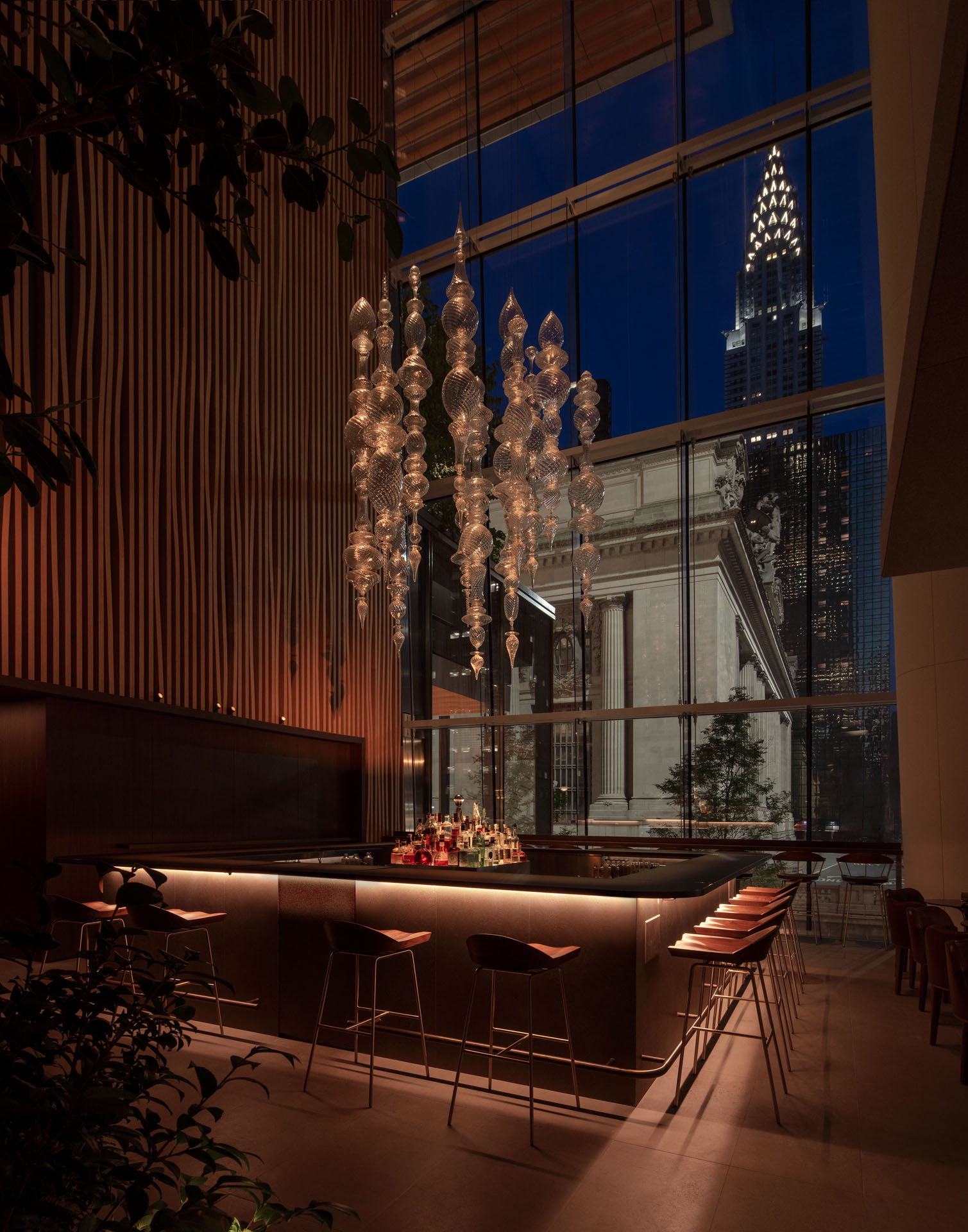
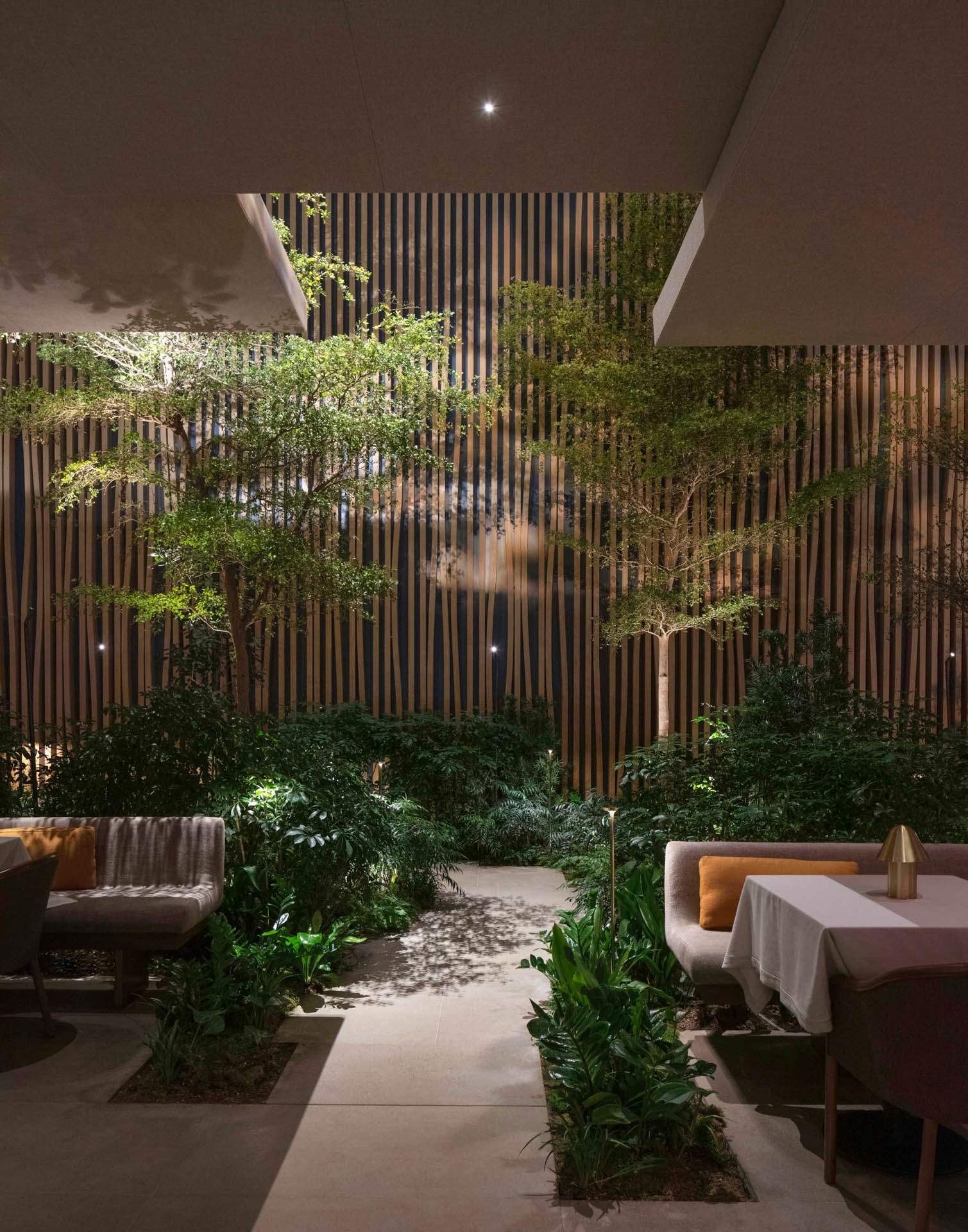
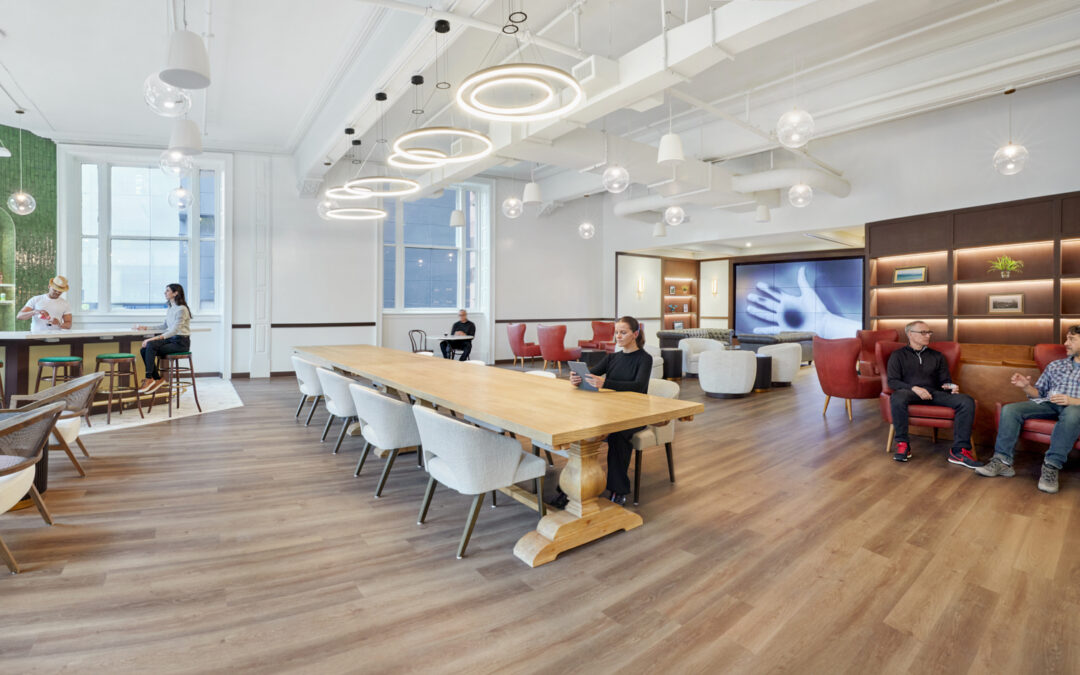
MDA is One of the Nation’s Largest Workplace Interior Architecture Firms
Montroy DeMarco Architecture LLP is one of the Nation's Largest Workplace Interior and Interior Fitout Architecture and Architecture Engineering (AE) Firms! Check out Building Design+Construction Magazine's Annual 2024 Giants 400 Report....
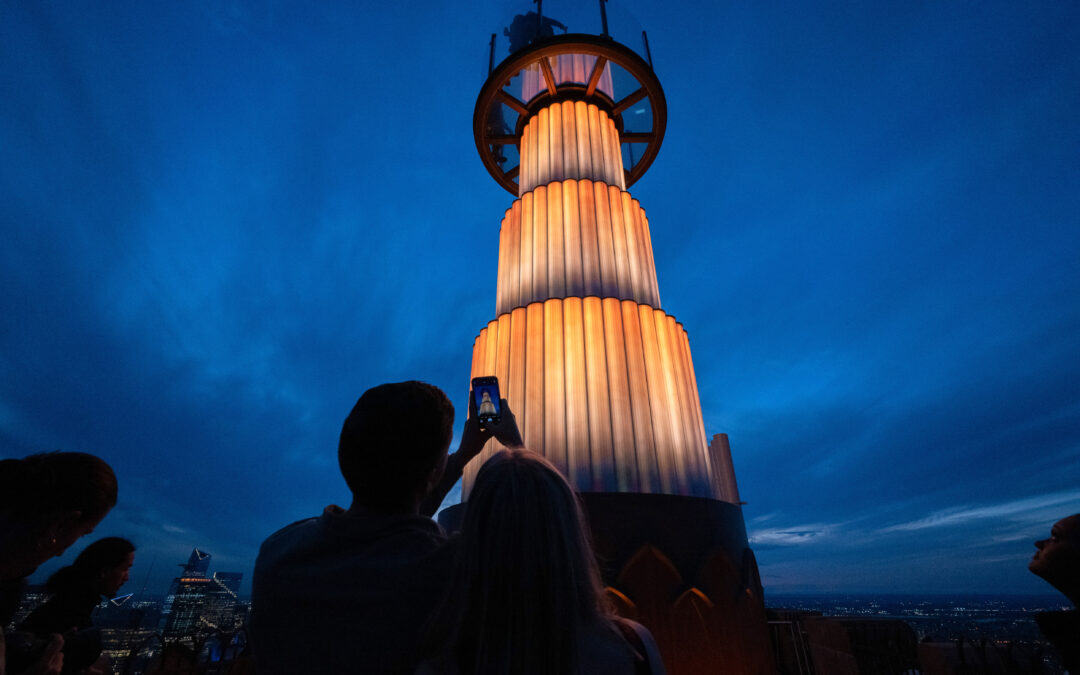
Top of the Rock Opens 900 Ft. High Skylift Attraction
Skylift at Top of the Rock, a new attraction atop 30 Rock, elevates visitors nearly 900 feet in the air above street level for a spectacular, entirely unobstructed, 360-degree view of New York City. The design team for the Skylift included owner Tishman Speyer...
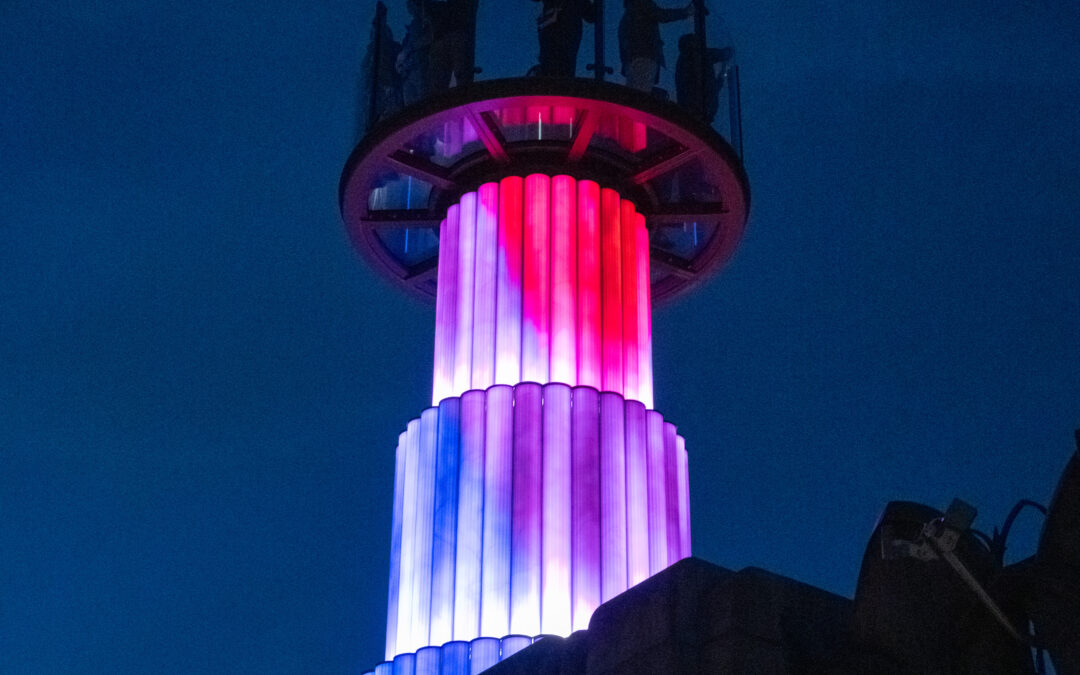
Tishman Speyer Properties and Architect Richard J. DeMarco Complete Skylift At Rockefeller Center’s Top Of The Rock
The One-of-a-Kind Attraction Elevates Visitors Nearly 900 Feet Above New York City New York, NY–Skylift at Top of the Rock, a new attraction atop 30 Rock, elevates visitors nearly 900 feet in the air above street level for a spectacular, entirely unobstructed,...
